Transcending Jerusalem through an Indian Lens
- Ranjan Kaul

- Dec 6, 2021
- 8 min read
Updated: Dec 7, 2021
by Ranjan Kaul
To mark the occasion of Hanukkah (the Jewish festival of lights), the Embassy of Israel has organized an ongoing photo exhibition titled Transcending Jerusalem, curated by Dr Alka Pande, that visually narrates the cultural history of the country’s ancient capital, Jerusalem, through the camera lenses of three internationally acclaimed Indian photographers – Parthiv Shah, Prabir Purkayastha and Aditya Arya – at the ‘Galerie at Museo’ in the Museo Camera Centre for the Photographic Arts, Gurugram.
It is always such a delight to visit the Museo Camera complex, tucked away in a quiet lane in Gurugram, with its amazing architecture and a quirkily painted autorickshaw and an Ambassador car parked on the entrance compound. It has been raining and there’s still a light drizzle, so I rush to enter the building with its high ceilings and colourful banners and the warmth exuding from the Fig café on the ground floor.
Left: Museo Camera entrance (photo courtesy of Ranjan Kaul); Centre and right: The exhibition on the opening (photos courtesy of Anil Rawat)
I quickly climb the stairs to the first floor to the gallery to view the photography exhibition. In her curatorial note, Dr Alka Pande gives the context of the exhibition succinctly: “Finding meaning within, yet moving beyond the boundaries to transcending Jerusalem, the three photographers – Prabir Purkayasthta, Parthiv Shah and Aditya Arya – take on the journey of visually narrating the cultural history of Jerusalem through their works.”
One of the oldest cities in the world, Jerusalem has had a rather patchy and eventful history, characterized by conflicts among nations and clashes of civilization and was fractured for generations. Eventually unified in 1967 and now the capital of Israel, it evokes various emotions in the peoples of three monotheist religions who have their roots in this holy city – Christianity, Judaism and Islam. While Christians revere it as the place where Jesus suffered and also prevailed, for Muslims it is the destination of Prophet Muhammad’s mystical night journey and the site of one of Islam’s most sacred shrines. To the Jews, Jerusalem represents age-old longings and prehistoric splendour, and is a centre of reawakening and resurgence. Owing to its chequered history, Jerusalem is now a city of rich cultural plurality and contradictions – of spiritual harmony and underlying tensions – at the same time, it evokes belongingness and sharing.
As the Ambassador of Israel in India Naor Gilon says in his note displayed on the gallery wall, “As I walk the streets of the city, I walk the same paths and places that for generations many visitors have walked before and like them, I foresee with my own eyes the layers of history that reveal remnants of the ancient civilizations that existed in Jerusalem. Today’s Jerusalem connects the sacred with the earthy, the past and the present, alongside spirituality and holiness; it is also a young and vibrant city with a thriving cultural life.”
It is this togetherness with its multi-hued cultural diversity and religiosity that the amazing array of photographs captures. As I see the exhibition, I find myself comparing the two diverse angles and perspectives from which two of photographers, each in their own way, frame the Dome of the Rock (an Islamic shrine on Temple Mount situated on a hill in the Old City of Jerusalem). For thousands of years Temple Mount has been venerated as holy site in Judaism, Christianity and Islam alike because it houses the shrines of each of the three faiths. While Arya shoots the gilded dome reaching for the azure blue sky, viewing it from below and climbing the steps, as it were, with a Muslim faithful towards it, Purkayastha gets a spectacular shot of it through the arches.

Dome of the Rock at Temple Mount by Aditya Arya

Dome of the Rock at Temple Mount by Prabir Purkayastha
Aditya Arya, wearing a hat, now joins me in the gallery. He is also the founder and director of Museo Camera – a museum which traces the history of photography from the 1870s to the digital era. Ensconcing himself comfortably in a settee placed in the middle of the gallery, he answers my queries regarding the show and gives me useful insights. He also tells me that all the photographs at the exhibition were shot within a space of four days during a six-day, hectic guided tour of the city.
A recipient of several awards, Parthiv Shah is an internationally renowned photographer and documentary film-maker and the Founder-Director of the Centre for Media and Alternative Communication (CMAC). Of late, he has been working on facets of image perception and representation.
Talking of Shah’s work in the show, Dr Pande says, “The city of Jerusalem for Parthiv Shah stands as a repository of the intangible essence of amalgamation, resurrection, testimony and allegiance. There is a universal appeal in his works minus the intrusion, set-up or posing, which helps to capture unadulterated slices of life.”
Shah is a storyteller weaving stories of the old and the new, of faith and freedom, of people and monuments who have been witness to the buried histories of the Holy City, now bustling with life with its multi-faith cultures. He narrates the stories of the city’s inhabitants, leading their simple, quotidian lives. The works portray contrasting emotions of joy and despair, of love and separation; spirituality and faith; and modernity and new technologies.
In two contrasting photographs (given below) we see an insightful juxtaposition of the old and the new – while in one a lady in the traditional dress with a red hijab is gazing into the distant at the old city, as though peeking at the aeons gone by, in the other a modern, confident girl in jeans faces the camera against the backdrop of the new city.
Finally, I’d like to single out another of Shah's photos: an incisive composition of an Israeli citizen with the high-walled boundary of the Palestinian border, which instantly gives a sense of the tension prevailing in the city. This photo leads us to the works of the second photographer I take up in this review.

Prabir Purkayastha is a fine art photographer who has worked for two decades in leading advertising agencies. He had explored the idea of faith earlier in Ladakh and published a picture book on the region which won accolades and awards. Selected as one of the Super Six Photographers for 2009 by Fuji Film, India, his solo exhibitions have received critical acclaim across the world. In the words of the photographer, the images in the show depict “a pulsating timelessness.” He says that Bezalel (in the shadow of God) was omnipresent every time he placed his camera to the eye, superimposed on every composition, sometimes consciously, sometimes not.

Bezalel
Unlike the works of Shah, there is a tangible sense of unease and disquiet in Purkayastha’s work. Besides the two brighter images featuring children and the one above, his photographs are dark and grey, often using shots of buildings with sharp edges to send out a subtle message. Be it the Jewish soldier offering prayers, the barbed wires on the turret, or the massive replicas of the old city with the fortress walls, they metaphorically reflect the palpable tension permeating the port city. There is deliberateness in the way he has shot the acute-angled, towering black granite (Victory), constructed in memory of those who died in the horrific Holocaust.

Victory
“Much as I tried, I could not escape the ancient presence of the city’s underlying tension and animosity,” Purkayastha says, “a melancholic edginess seemed to settle in my heart . . . To complement the nuances of Bezalel with the photographs for Transcending Jerusalem . . . I needed my imagery to be an insightful, compassionate and sometimes brutal – telling the world a bitter-sweet story.”
The photographer has added meaningful quotes to many of his images. I give here an excerpt from an Israeli photojournalist, Ziv Koren, who he befriended during his stay which seems to resonate with his sentiments: “I have been covering war and conflicts . . . mostly the Israeli-Palestinian conflict. Working as a war photographer you come across situations where you understand that there is nothing more horrific than this conflict . . . I see that the only solution is going back to the table, talking about the issues, and try to achieve peace.”
Aditya Arya, an eminent professional and travel photographer, wears several hats including what I earlier described and those of a photo archivist and alternative print-maker. The recurring motif in his work featured in the exhibition is the Jerusalem stone, which has retained its pristine quality for the past 3000 years. All the ancient streets, monuments, walls, and buildings in Jerusalem, he tells me, are made using the stone. Even those living outside the city come here to take this stone to construct their dwellings. This is why his works focus on the stone. Made of the least porous of all limestone materials, Arya captures the unique character and texture of the Jerusalem stone in his photographs, which he says “is not only known for its spiritual, historic and regional significance, but is also popular for its remarkable durability as a high-quality building material. . . . It is a symbol not only of Jewish identity but also the enduring spirit of an ancient land.”
For Arya, then, the soft Jerusalem stone is a visual metaphor, symbolizing and reaffirming its significance in shaping and building the city of Jerusalem. In his work he provides an amazing interplay of the colour black against the light-toned backdrop of the soft, textured Jerusalem Stone – the black clothing of Jewish men with their typical hats casting dark grey shadows on stone slabs and the Wailing Wall; the bottom half of a woman dressed all in black. With the photographer's trained eye, he captures a flying white pigeon casting a black shadow on the wall. Even when shooting a colourfully painted wall, he frames the image with the jutted wall edge with alternating recessed slabs made of Jerusalem stone in the left foreground and a building on the other side (see the photo at the bottom left).
I’m most intrigued by a set of “salt prints” on display (see below). Arya now dons the hat of an alchemist to explore the land and its metaphors, given his abiding interest in vintage cameras and photography. He explains that the salt prints were the dominant paper-based photographic process for producing paper prints in mid-nineteenth century and was created by the English inventor Henry Fox Talbot. For his own work, Arya sourced the salt from the Dead Sea (known in Hebrew as Yam Ha-Melakh or the Sea of Salt), which is the world’s deepest hypersaline lake. The salt when combined with silver nitrate provided him the textured tint he was looking for.
What makes this exhibition fascinating and well worth visiting is that it covers so much ground – from gilded domes and ancient Jerusalem stone walls and slabs, to vibrant markets and modern technologies; from peoples of different faiths and their simple daily lives to the palpable tensions. Each of the three photographers captures the city of Jerusalem in their individual visual language and metaphors to reveal their interpretations and insights. The diverse, multi-faith culture of Jerusalem holds lessons for India as well – how to live with inclusiveness and harmony.
It has stopped raining as I step out, so I loiter around to imbibe the ambience of the Museo Camera complex, only to find Aditya Arya wearing yet another hat – that of a gardener! He’s counting the new flowerpots he’s brought from the nursery and finds a couple of missing. He hollers out to find out where they’ve disappeared before we exchange some more notes and I bid adieu.
The exhibition will remain open till 15 December 2021.
(All photographs are courtesy of the respective photographers, unless mentioned otherwise.)

Ranjan Kaul is an artist, art writer, author and Founding Partner of artamour.
His art can be viewed on www.ranjankaul.com






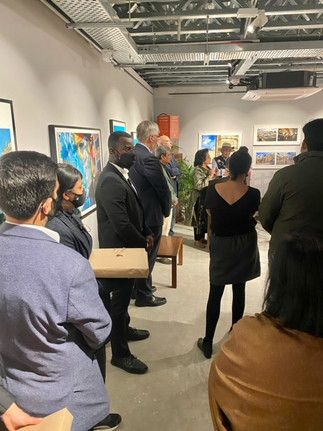
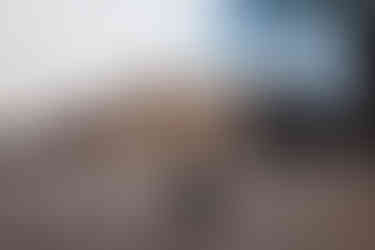








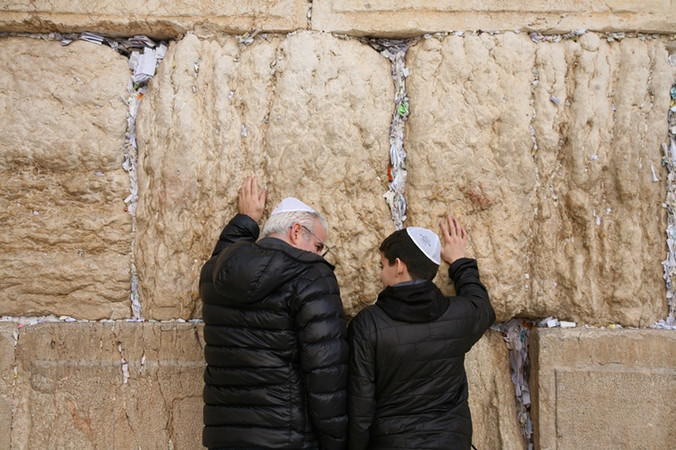



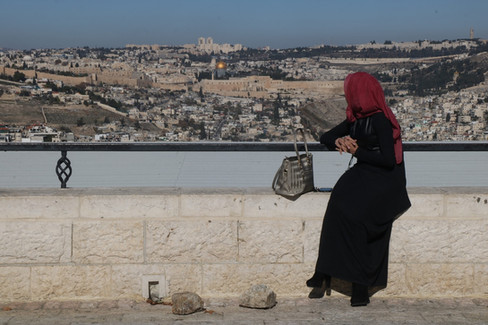
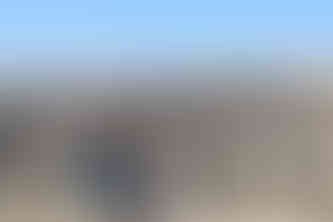






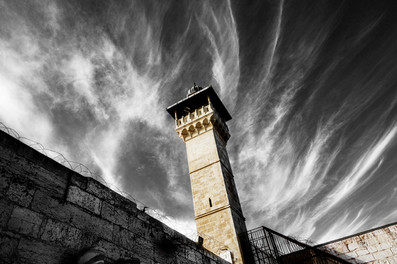

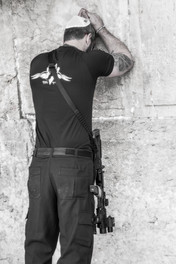




























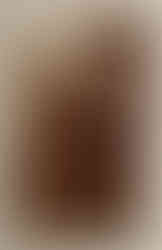




Comments